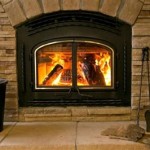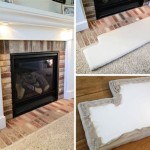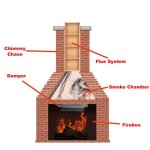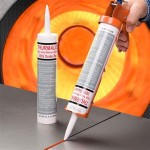Gas Freestanding Fireplaces: A Comprehensive Overview
Gas freestanding fireplaces represent a versatile and efficient heating solution for homes. They offer the aesthetic appeal of a traditional fireplace without the need for wood, resulting in cleaner, more convenient operation. These appliances are self-contained units that can be installed in various locations within a home, provided proper venting and gas line connections are established.
The popularity of gas freestanding fireplaces stems from their ease of use, consistent heat output, and modern designs. They serve as both functional heating sources and attractive focal points in living spaces. Understanding the different types, features, and installation requirements is crucial for selecting the right unit to meet specific heating and aesthetic needs.
Types of Gas Freestanding Fireplaces
Gas freestanding fireplaces are categorized primarily by their venting system. The venting system dictates how combustion byproducts are expelled from the unit, impacting installation requirements and efficiency.
Direct Vent Fireplaces: Direct vent fireplaces are considered the most efficient and safest type. They draw combustion air from outside the home and vent exhaust gases directly outdoors through a sealed system. This system typically consists of two concentric pipes, one for intake and one for exhaust. Direct vent fireplaces can be vented horizontally through a wall or vertically through the roof, providing greater installation flexibility. Because the combustion chamber is sealed, there is no risk of indoor air being used for combustion or of exhaust fumes entering the home.
Vent-Free Fireplaces: Vent-free fireplaces, also known as ventless fireplaces, do not require any venting to the outside. They burn fuel so efficiently that the amount of combustion byproducts released into the room is considered negligible under normal operating conditions. These fireplaces are equipped with oxygen depletion sensors (ODS) that shut off the gas supply if oxygen levels in the room become too low, ensuring safety. While vent-free fireplaces offer the advantage of easy installation due to the lack of venting requirements, they are subject to specific local building codes and regulations due to concerns about indoor air quality. It is imperative to consult with local authorities and adhere to all safety guidelines before considering a vent-free fireplace.
B-Vent Fireplaces: B-vent fireplaces, also known as natural vent fireplaces, require a vertical vent that terminates above the roof. They draw combustion air from inside the home and rely on natural draft to vent exhaust gases. B-vent fireplaces are less efficient than direct vent models because they draw heated air from the room for combustion, increasing heating costs. They are often used as replacements for existing wood-burning fireplaces that already have a chimney and vent system.
Key Features and Considerations
Beyond venting systems, several key features influence the performance, aesthetics, and overall satisfaction with a gas freestanding fireplace. These include heat output, ignition systems, flame presentation, and control options.
Heat Output: The heat output of a gas freestanding fireplace is measured in British thermal units (BTUs). The appropriate BTU rating depends on the size of the space to be heated. A larger room requires a higher BTU output. It is crucial to select a fireplace with sufficient heating capacity to effectively warm the intended area. Consideration to your local climate is important, too. Colder climates will require fireplaces with greater BTU ratings to keep interior spaces adequately heated.
Ignition Systems: Gas freestanding fireplaces employ different ignition systems: standing pilot, electronic ignition, and intermittent pilot ignition (IPI). Standing pilot systems have a small pilot light that burns continuously, providing a ready flame for ignition. Electronic ignition systems use an electric spark to ignite the gas, eliminating the need for a standing pilot and saving energy when the fireplace is not in use. IPI systems offer a balance between the two, with a pilot light that ignites only when the fireplace is in use. Electronic ignition and IPI systems are generally more energy-efficient than standing pilot systems.
Flame Presentation and Aesthetics: The visual appeal of the flames is a significant factor for many homeowners. Gas freestanding fireplaces offer a variety of flame presentations, from realistic log sets to contemporary glass media. Different burner designs create varying flame patterns and intensities. It is important to choose a fireplace that matches the desired aesthetic style and creates the desired ambiance.
Control Options: Gas freestanding fireplaces can be controlled using various methods, including manual controls, remote controls, and programmable thermostats. Remote controls provide convenient operation from a distance. Programmable thermostats allow for automated temperature control, optimizing energy efficiency and comfort. Some models offer smart home integration, enabling control via smartphone apps and voice assistants.
Installation and Safety
Proper installation is paramount for the safe and efficient operation of a gas freestanding fireplace. Installation should be performed by a qualified and certified technician who is familiar with local building codes and regulations.
Gas Line Connection: Connecting the fireplace to the gas line must be done carefully to prevent gas leaks. A qualified gas fitter should perform the gas line connection, ensuring that all connections are properly sealed and tested. The gas line must be sized appropriately for the fireplace's gas consumption rate to ensure adequate fuel supply.
Venting Requirements: The venting requirements vary depending on the type of fireplace. Direct vent fireplaces require a specific type of venting pipe that is approved for use with gas appliances. The venting system must be installed according to the manufacturer's instructions to ensure proper exhaust of combustion gases. B-vent fireplaces require a chimney liner if connected to an existing chimney. Vent-free fireplaces, while not requiring venting, require adequate ventilation in the room to ensure sufficient oxygen levels and to prevent the buildup of combustion byproducts. All installations must adhere to relevant safety codes to prevent fire hazards and carbon monoxide poisoning.
Safety Features: Gas freestanding fireplaces are equipped with various safety features, including oxygen depletion sensors (ODS) and flame failure devices. The ODS shuts off the gas supply if oxygen levels in the room become too low, preventing carbon monoxide poisoning. The flame failure device shuts off the gas supply if the flame is extinguished, preventing gas leaks. Regular maintenance, including professional inspection and cleaning, is essential to ensure these safety features are functioning properly.
Ultimately, selecting and installing a gas freestanding fireplace requires careful consideration of venting options, feature sets, and safety protocols. Consulting with qualified professionals and adhering to local building codes are vital steps in ensuring a safe and satisfying heating experience.

Majestic 30 Inch Ruby Freestanding Gas Fireplace Nyc Fireplaces Outdoor Kitchens

Enviro S50 Freestanding Gas Stove Ipi Direct Vent Fireplace Gallery

Freestanding Gas Fireplaces Fergus Fireplace
Supreme Freestanding Indoor Gas Fireplace Heat Glo

Free Standing Gas Fireplace Stoves For 30 On Now

50 Free Standing Ventless Gas Fireplace Visualhunt

Freestanding Gas Fireplaces Fergus Fireplace

Freestanding Gas Burning Stoves Sierra Hearth And Home

Kingsman Fdv350 27 Inch Freestanding Direct Vent Gas Stove With Log Set

Gas Stove Fireplaces Elegant And High Quality Rais








